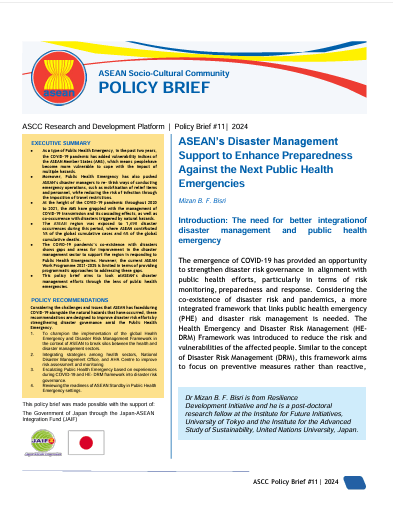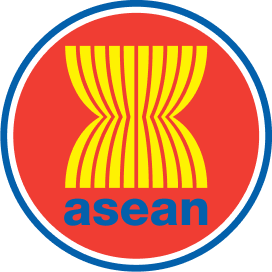

EXECUTIVE SUMMARY
- As a type of Public Health Emergency, in the past two years, the COVID-19 pandemic has added vulnerability indices of the ASEAN Member States (AMS), which means peoplehave become more vulnerable to cope with the impact of multiple hazards.
- Moreover, Public Health Emergency has also pushed ASEAN’s disaster managers to re- think ways of conducting emergency operations, such as mobilisation of relief items and personnel, while reducing the risk of infection through the imposition of travel restrictions.
- At the height of the COVID-19 pandemic throughout 2020 to 2021, the AMS have grappled with the management of COVID-19 transmission and its cascading effects, as well as co-occurrence with disasters triggered by natural hazards.
- The ASEAN region was exposed to 1,690 disaster occurrences during this period, where ASEAN contributed 5% of the global cumulative cases and 6% of the global cumulative deaths.
- The COVID-19 pandemic’s co-existence with disasters shows gaps and areas for improvement in the disaster management sector to support the region in responding to Public Health Emergencies. However, the current ASEAN Work Programme 2021-2025 is limited in terms of providing programmatic approaches to addressing these gaps.
- This policy brief aims to look atASEAN’s disaster management efforts through the lens of public health emergencies.
POLICY RECOMMENDATIONS
- Understand baseline and raise awareness on the resilience of coastal cities
- Conduct coastal risk assessments
- Identify and design solutions:
- Installation of vertical structures or revetments using ecological approaches and low- cost solutions.
- Install Geotubes to protect shorelines from the effect of erosion.
- Conduct short- and medium-term (less than 30 years) solutions such as protection of roadways along coastal areas, improve early warning systems, and improve drainage systems.
- Conduct long-term (beyond 30 years) solutions such as relocation of population and properties at coastal area to lower the risks.
Share







